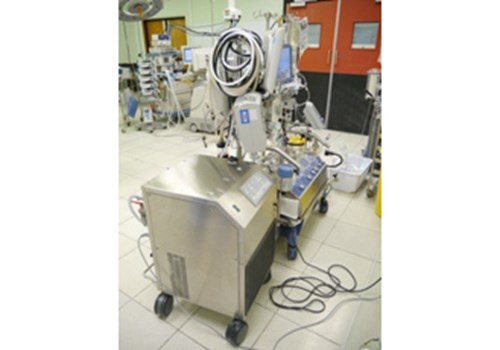Global supply of healthcare products: the Mycobacterium chimaera challenge

NCTC is working to provide authenticated reference strains of Mycobacterium chimaera. This organism was first described as a species in 20051 and the type strain is now available as NCTC 13781.
Until fairly recently M. chimaera was a low profile microorganism in the sphere of human infection; it was known to be present in the environment in some geographical locations and had been linked rarely to lung infections in patients with underlying lung conditions such as Chronic Obstructive Pulmonary Disease. However, this changed in 2014 when six cases of severe infection, attributed to M. chimaera, were reported in cardiac surgery patients in Zurich2.
After similar cases were reported in the Netherlands, microbiologists in the UK launched a national investigation to assess the risk of invasive M. chimaera infection in cardiothoracic surgery and determine whether there was an association with heater-cooler units. This investigation identified a significantly elevated and increasing risk of M. chimaera infection after cardiothoracic surgery compared to the general population3.
In August 2015 the European Centre for Disease Prevention and Control (ECDC) issued a protocol for case detection, laboratory diagnosis and environmental testing of M. chimaera infections potentially associated with heater-cooler units. The document provides information about this multi-country outbreak of M. chimaera in invasive cardiovascular infections in patients who have undergone cardiac surgery, which appears to date back to 20114.
M. chimaera is a slow-growing non-tuberculous mycobacteria within the Mycobacterium avium complex (MAC) which also encompasses M. avium and M. intracellulare. M. chimaera is generally considered to be less pathogenic than the other two species. MAC strains often infect sites that are challenging for antimicrobial penetration and this factor, together with their intrinsic antimicrobial resistance, means that prolonged treatment is usually required.
This association of an infection with a globally-supplied healthcare product underlines the need for effective communication between regulatory and public health authorities to ensure that emerging risks to patient safety are identified rapidly.
NCTC, operated by Public Health England’s National Infection Service, is ideally placed to provide authenticated bacterial strains of emerging or established importance for human health as reference strains for diagnostic testing or research projects. Two strains of M. chimaera from the clinical environment, NCTC 13933 and NCTC 13934, deposited by PHE’s Biosafety, Air and Water Microbiology Group, are currently being cultured for freeze-drying and will be added to the NCTC catalogue in the coming weeks.
References:
- Tortoli et al Proposal to elevate the genetic variant MAC-A, included in the Mycobacterium avium complex, to species rank as Mycobacterium chimaera sp. nov. 2004 Int. J. Syst. Evol. Microbiol, 54, 1277-1285
- Rami Sommerstein, Christian Rüegg, Philipp Kohler, Guido Bloemberg, Stefan P. Kuster, Hugo Sax Transmission of Mycobacterium chimaera from Heater–Cooler Units during Cardiac Surgery despite an Ultraclean Air Ventilation System Emerg Infect Dis. 2016 Jun; 22(6): 1008–1013. doi: 10.3201/eid2206.160045
- Meera Chandet al Insidious Risk of Severe Mycobacterium chimaera Infection in Cardiac Surgery Patients. Clin Infect Dis 2017; 64 (3): 335-342. doi: 10.1093/cid/ciw754
- European Centre for Disease Prevention and Control (ECDC). EU protocol for case detection, laboratory diagnosis and environmental testing of Mycobacterium chimaera infections potentially associated with heater-cooler units: case definition and environmental testing methodology. Stockholm: ECDC. Aug 2015. http://ecdc.europa.eu/en/publications/Publications/EU-protocol-for-M-chimaera.pdf
